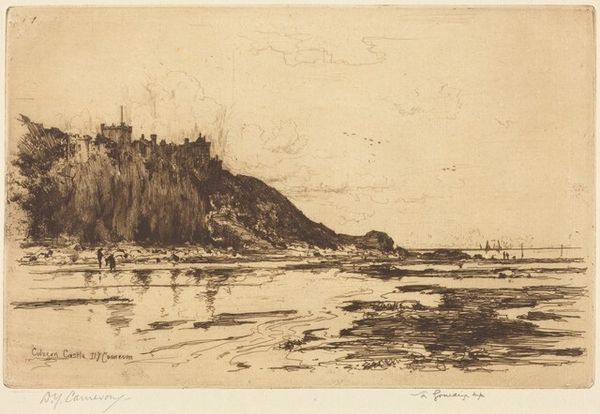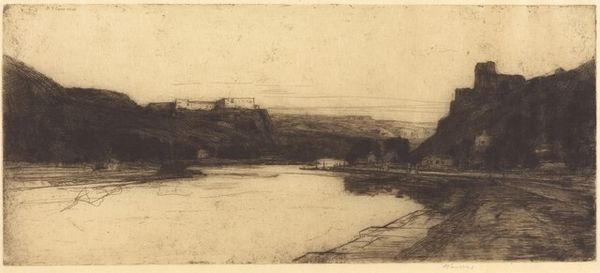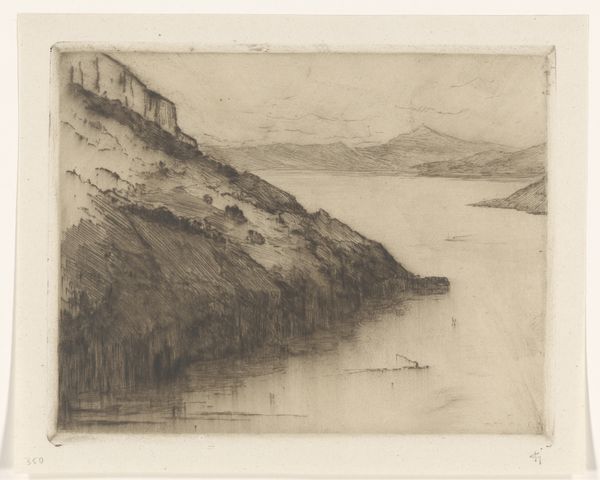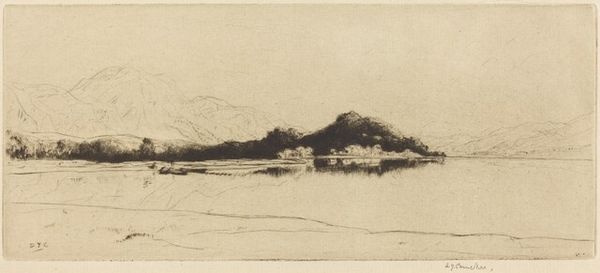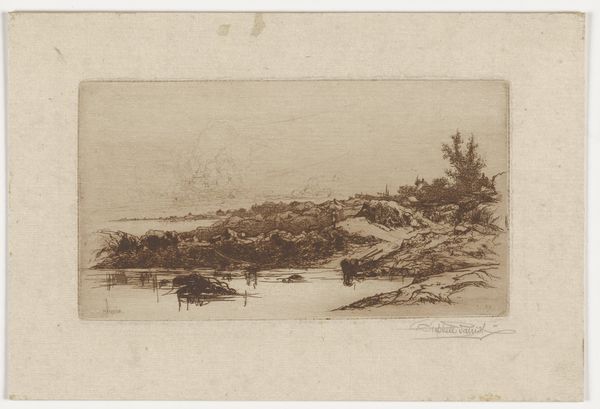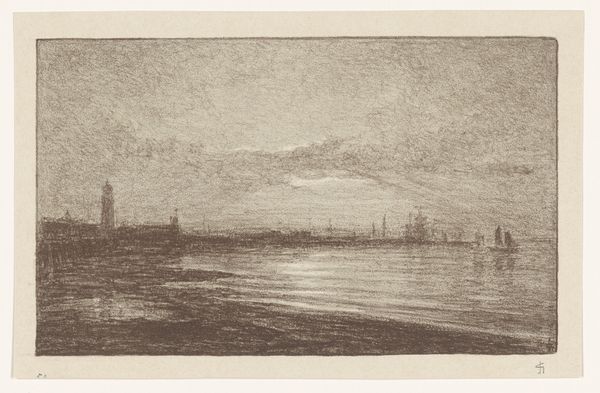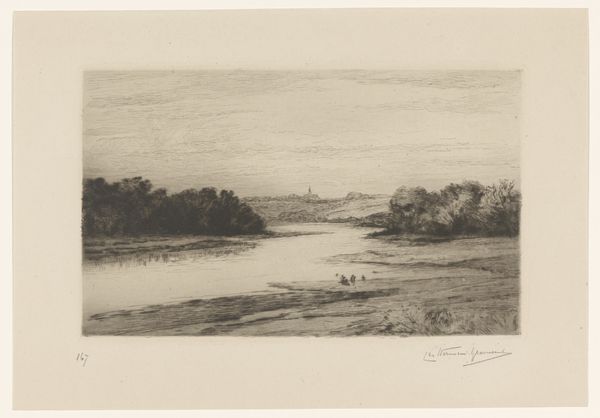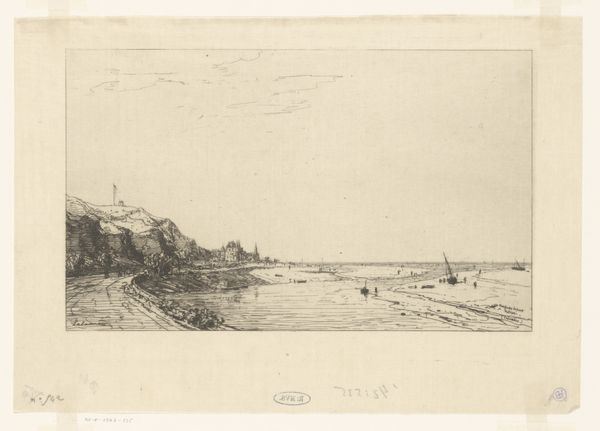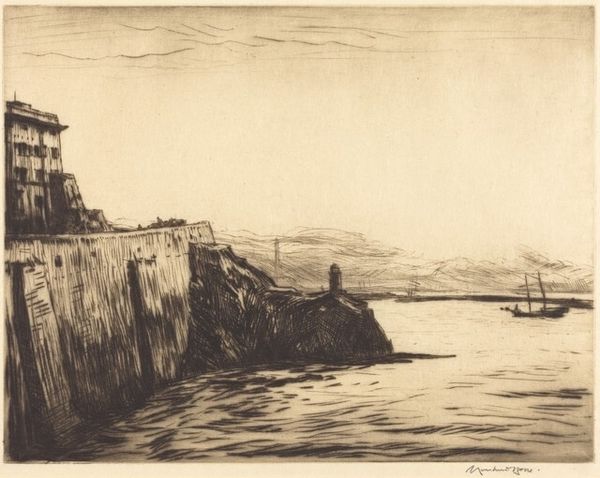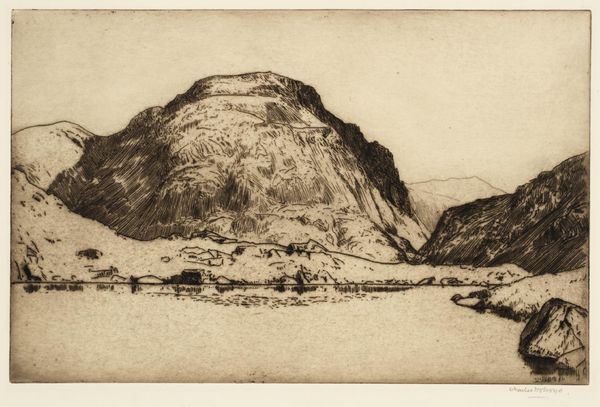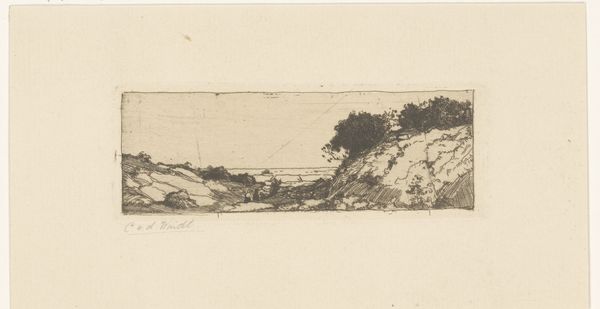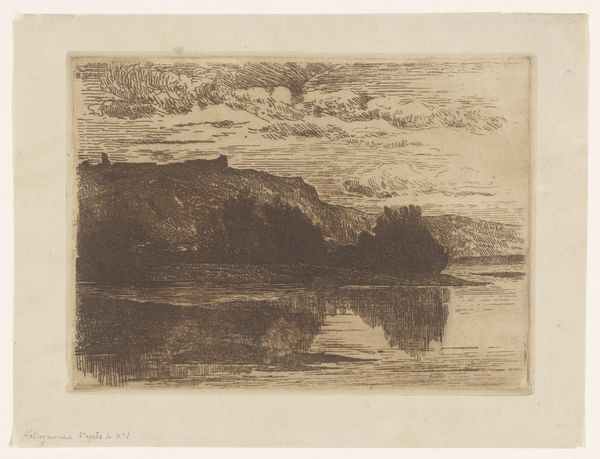
Copyright: National Gallery of Art: CC0 1.0
Editor: Here we have David Young Cameron’s "The Fisher's Hut," an etching from 1910. It’s quite subtle, almost ghostly. The composition is interesting, with a dark mass on the left balancing the lighter building on the right. How do you interpret this work? Curator: From a historical perspective, etchings like this reflect a broader interest in printmaking as a democratic art form. The late 19th and early 20th centuries saw a boom in etchings and engravings, fuelled by art societies promoting affordable art for the masses. Consider, who had access to this image? Was it intended for the working class or a more affluent art collector? Editor: That’s a good point. I hadn’t thought about the intended audience. So, the content, a simple landscape, fits within that movement? Curator: Exactly. The seemingly pastoral scene belies the socio-economic context. Look closely at the figures near the hut. What do they tell us about rural life at the time? Are they romanticized or realistic? Editor: They appear to be working, perhaps mending nets? There’s a certain… stoicism. But there's no great drama here. It feels fairly observed, maybe leaning toward romantic. Curator: The absence of dramatic narrative could also be a deliberate choice. Cameron might be offering a quiet commentary on the everyday realities of rural labor, accessible to a wider audience through the print market. It’s about access, circulation, and how meaning shifts depending on the viewer. Editor: That makes me see the work in a completely different light! It’s not just a pretty landscape, but a document reflecting complex social dynamics of its time. Curator: Precisely! The power of art lies in its ability to reflect and shape society.
Comments
No comments
Be the first to comment and join the conversation on the ultimate creative platform.
